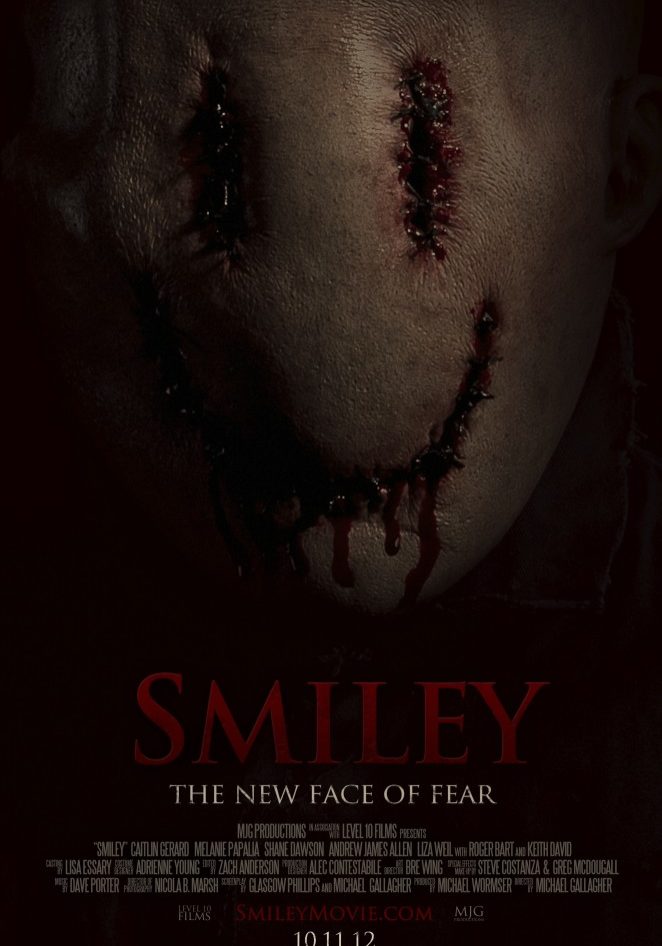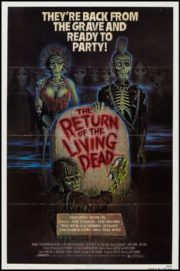Grinning in the Face of Fear: “Smiley” Unveiled
“I did it for the lulz.” This chilling mantra sets the stage for Michael J. Gallagher’s 2012 horror film, Smiley, a digital-age nightmare that attempts to meld the terror of the internet’s anonymity with slasher film tropes. The movie follows Ashley, a troubled college student, as she’s introduced to the urban legend of Smiley—a faceless killer who can be summoned through the internet. When the myth seemingly comes to life, Ashley’s world spirals into a terrifying reality, prompting viewers to question the sinister potential of the technology we use every day.
Whispers in the Web: Crafting Digital Dread
The atmosphere and tone of Smiley are rooted in the sinister underbelly of the internet, playing on the fear of the unknown within the digital space. The film tries to weave suspense with a palpable sense of foreboding and uses visuals such as dimly lit rooms and the omnipresence of computer screens as an extension of this dread. Gallagher strives to build tension through the idea of an unstoppable, supernatural force connected to the casual cruelty seen online—the casual phrase, “lulz”, becomes a harbinger of death.
Cinematic Shadows: Artistry or Artifice?
The cinematography of Smiley provides an unsettling yet run-of-the-mill aesthetic. The use of lighting and shadows aims to craft a foreboding environment, with an emphasis on the stark contrast between the glow of monitors and the surrounding darkness. While some camera angles attempt to inject a sense of unease, and certain scenes use special effects to punctuate the horror, the film struggles to find a unique visual identity that strays from the standard horror formula.
Sound of Silence: Audio’s Eerie Echo
As with many horror films, the soundtrack and sound effects in Smiley are central to building the ambiance. There are moments where the score adeptly intensifies a scene’s emotion; however, the sound design can be inconsistent, sometimes undermining the tension by either overstating the horror or failing to fully capitalize on quieter, more suspenseful moments.
Unmasking Fear: Characters and Scares
Between Screams and Screen Time
The characters of Smiley offer a mixed bag when it comes to development and portrayal. Ashley as the protagonist is given a more fleshed-out backstory, but this depth doesn’t necessarily translate to a captivating or sympathetic figure. The performances vary, with the actors treading the line between conveying genuine terror and falling into the trap of horror clichés.
The Anatomy of Terror: A Genre Dissection
Smiley incorporates elements of psychological horror, as well as the slasher film. It attempts to challenge genre conventions by integrating contemporary fears associated with technology. Nonetheless, the mechanics it utilizes—gore, jump scares, and psychological manipulation—are familiar to genre enthusiasts, and their execution ranges from appropriately shocking to disappointingly predictable.
What Lurks Beneath: Concluding Thoughts
The overall effectiveness of Smiley as a horror film is a divisive topic. It posits intriguing ideas and has ambitions of commenting on the consequences of anonymity and cruelty online. However, its delivery falters in consistently creating fear or achieving a genuinely innovative narrative within the saturated market of horror films. It may best serve those who have a particular interest in internet culture and its darker implications.
As for comparisons, Smiley doesn’t quite reach the disturbing depths of classics like “Halloween” or the thematic resonance of current trailblazers like “Get Out.” However, it stands as an attempt at bridging the chasm between cyber-horrors and old-school slasher flicks.
In summary, Smiley exhibits both potential and shortcomings in equal measure. Admirers of the horror genre who are curious about explorations of digital dread may find it worth a watch, though it may not satisfy those seeking visceral terror or profound thematic weight. For those sensitive to violence and the more grotesque elements of horror, tread cautiously—Smiley’s grin may be more grimace-inducing than grin-worthy.




